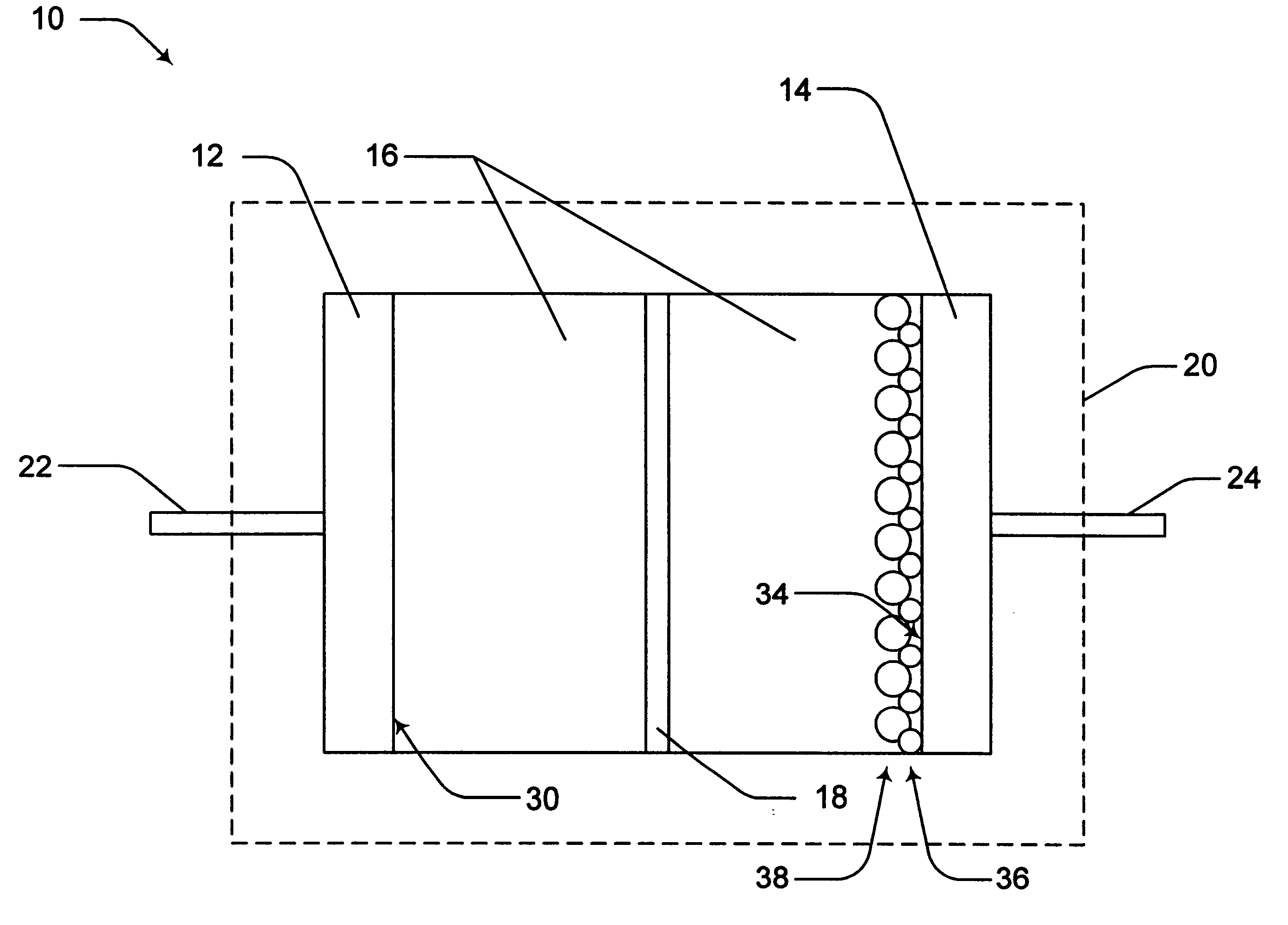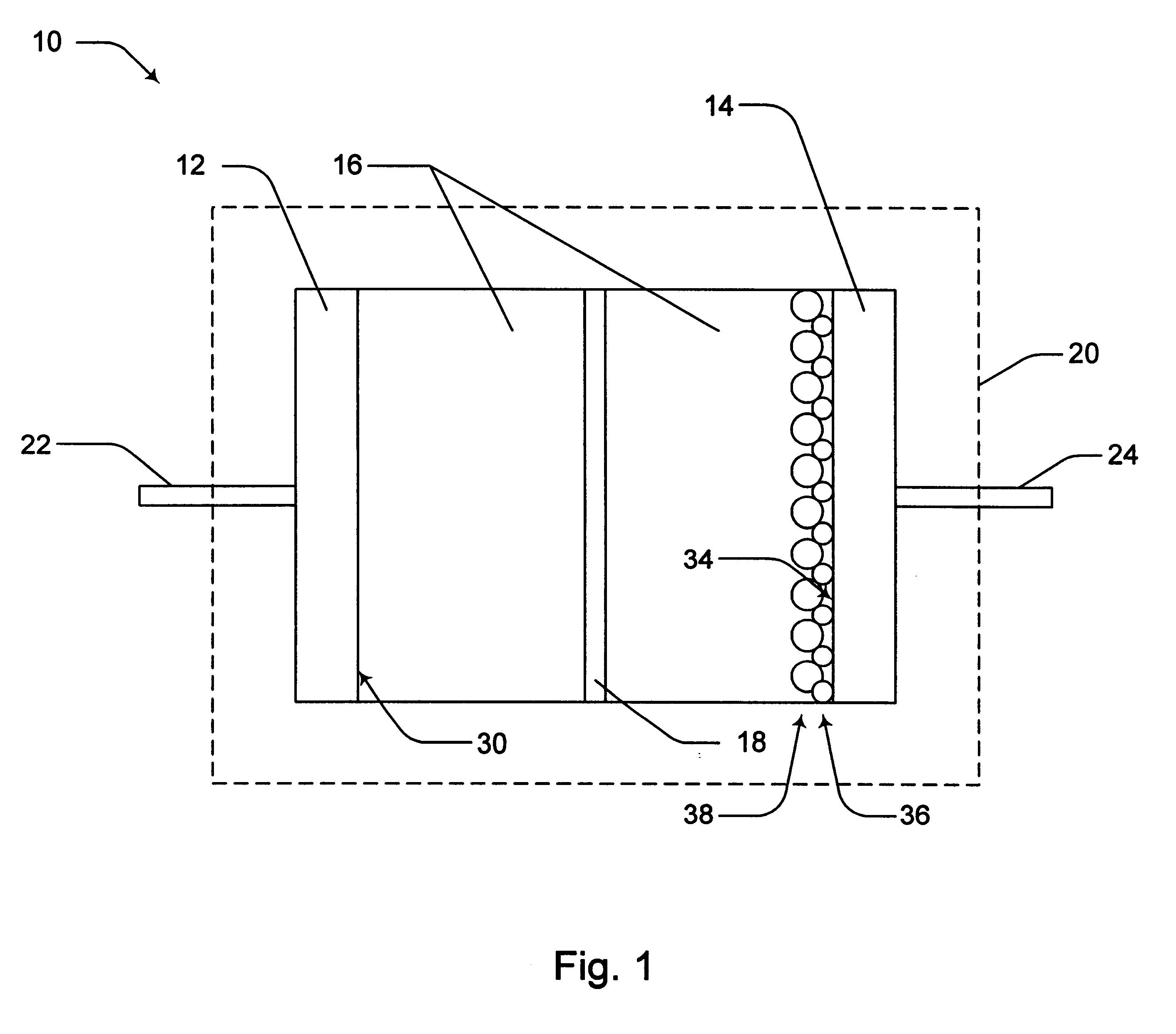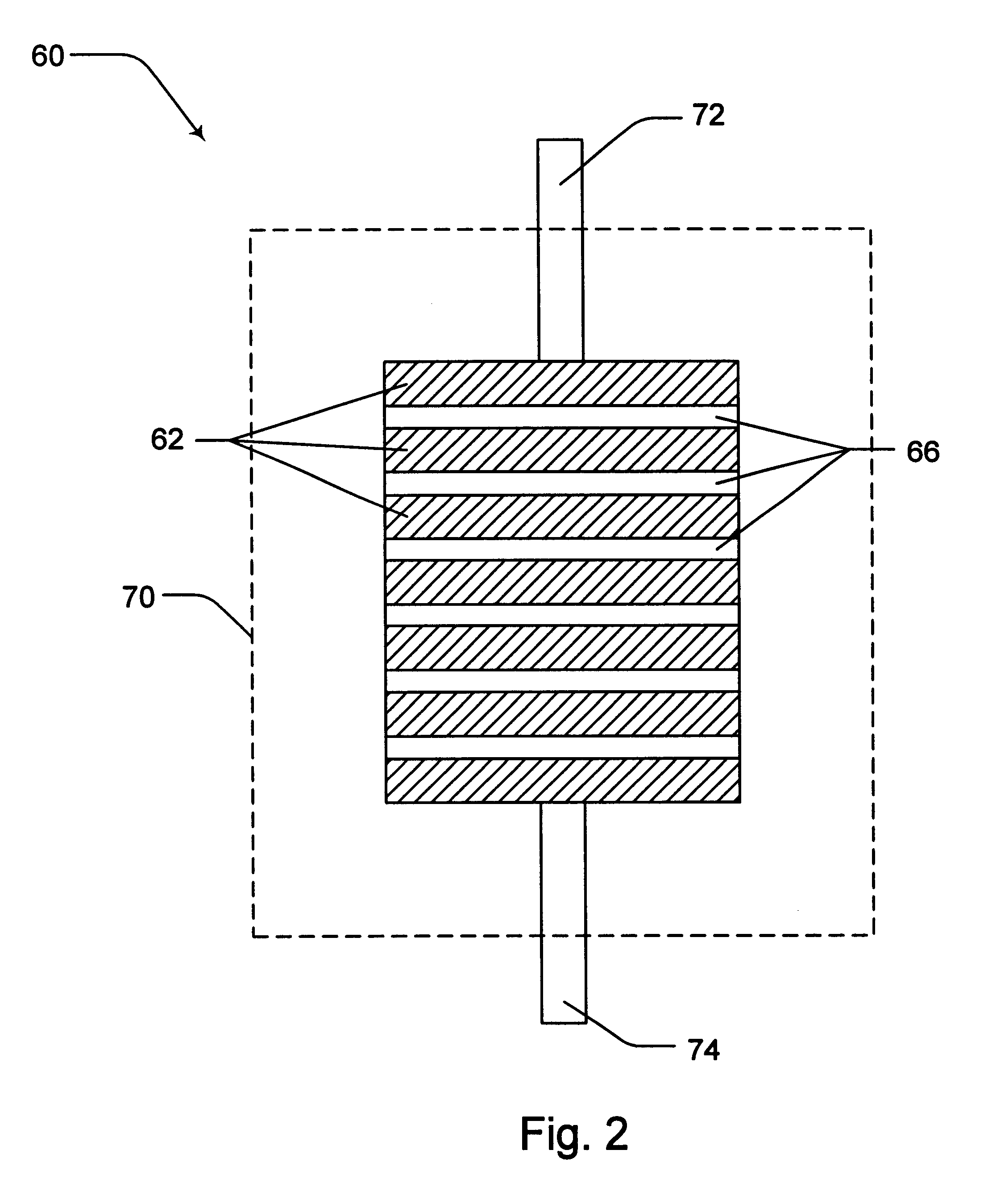Asymmetric electrochemical capacitor and method of making
- Summary
- Abstract
- Description
- Claims
- Application Information
AI Technical Summary
Problems solved by technology
Method used
Image
Examples
example 2
The capacitor of Example 1 is repeated with the following changes. The carbon electrode was used as the positive electrode. The negative electrode had a base of lead plate with a thickness of 0.02 cm, containing metal lead as the active material The overall thickness of the negative electrode was 0.03 cm, and its capacity was 0.4 Ah.
The volume of the cell was 6.48 cm.sup.3. The cell's capacity was 780 F (120 F / cm.sup.3) within a voltage range of 1.2-0.1 V.
Thus, the asymmetric design offer more energy density compared with symmetric design.
example 3
The capacitor was constructed using a positive electrode made of fiber or powder carbon material with specific surface area of 1400 m.sup.2 / g and with a thickness of 0.55 mm. The negative electrode was dry rolled metal hydride material (LaNi.sub.5 base formula) with a thickness of 0.2 mm and having a specific capacity of 0.9 Ah / cm.sup.3. The electrolyte was potassium hydroxide aqueous solution, density 1.28 g / cm.sup.3. The separator between the anode and cathode electrodes was a non-woven polyvinylchloride felt with a thickness of 0.22 mm.
Several pairs of positive and negative electrodes, with separators and electrolyte, were enclosed in a metal casing having dimensions of 50.times.24.times.11 mm and were sealed therein. This capacitor had a maximum cell working voltage of 1.4 V and a capacity per unit volume of 44 F / cm.sup.3. In comparison, the capacity of a symmetric carbon-carbon capacitor having the same dimensions was 21 F / cm.sup.3 in the voltage window of 1.0 to 0.5 V.
Other m...
PUM
 Login to View More
Login to View More Abstract
Description
Claims
Application Information
 Login to View More
Login to View More - R&D
- Intellectual Property
- Life Sciences
- Materials
- Tech Scout
- Unparalleled Data Quality
- Higher Quality Content
- 60% Fewer Hallucinations
Browse by: Latest US Patents, China's latest patents, Technical Efficacy Thesaurus, Application Domain, Technology Topic, Popular Technical Reports.
© 2025 PatSnap. All rights reserved.Legal|Privacy policy|Modern Slavery Act Transparency Statement|Sitemap|About US| Contact US: help@patsnap.com



